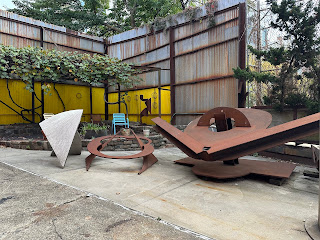A pioneer of color street photography, William Eggleston’s work has floated in the periphery of those whose work I am more familiar with. A contemporary of Stephen Shore, Eggleston’s work similarly focuses on the ordinary and mundane – street signs, condiments, gutter trash – and brings a rare quality to them with his use of color transparency film and later, the dye-transfer printing process.
Dye-transfer is a printing technique that yields pure, intense color, originally used to print Technicolor films, color prints used in advertising, and large transparencies for display. The process is responsible for the deep, deep reds present in much of his work, and most especially in Greenwood, Mississippi, 1971, also known colloquially as The Red Ceiling.
 |
| William Eggleston, Greenwood Mississippi, c. 1971 |
The first photo I saw of Eggleston’s was En Route to New Orleans, 1971-74, from his Los Alamos series. I was struck, not only by the simplicity of the subject matter and the absolutely dazzling color, but by the framing of the shot and the elongated, translucent shadow of the glass on the tray table. I found a postcard of the photo in the gift shop at The Met years ago and knew instantly that this piece was something special.
 |
| William Eggleston, En Route to New Orleans, c. 1971-74 |
I had the postcard hung on the wall of my apartment and one lazy weekend sometime in 2017, I decided to look further into Eggleston’s body of work. I stopped in my tracks when I came across Untitled, c.1983-1986, also from the Los Alamos series.
 |
| William Eggleston, Untitled, c.1983-1986 |
So simple, so stunning, and there was that brilliant red I loved so much. I printed a copy on high-quality paper and added it to the wall in my bedroom. And I took note: street photography subject matter does not have to be groundbreaking, because even the most ordinary of objects can mesmerize.
A few more favorites from the Los Alamos, 1965-1974 and The Outlands, 1969-74 series’:

















































